Five top 2012 airline trends that are reshaping business travel
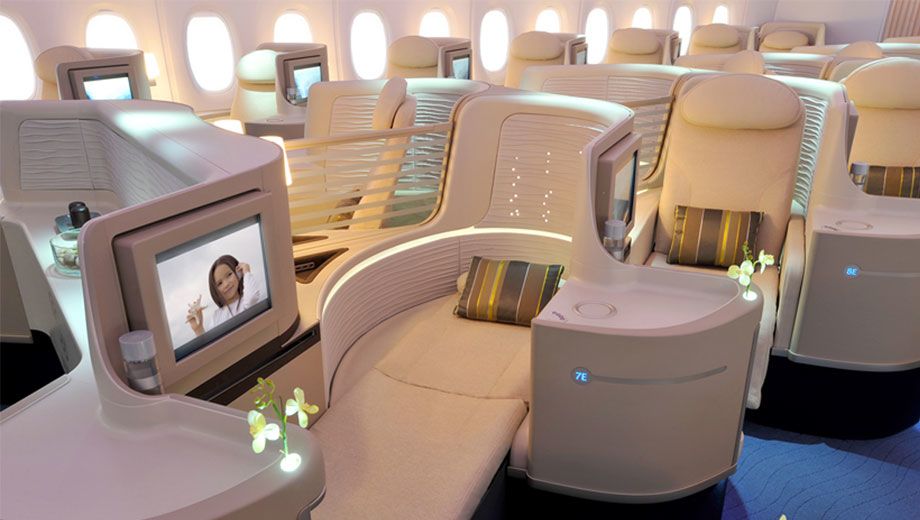
2012 is already an exciting year for business travellers, with new business class seats, new direct flights, new connecting hubs and new planes on the routes you fly.
But what's on the horizon? After interviewing key senior executives from airlines and the two main planemakers, Airbus and Boeing, Australian Business Traveller has identified five key trends that will affect your business travel -- for better or for worse -- over the coming few years.
1. More (and better) business class, less first class
We're calling it: expect more and more airlines to cut their first class cabins, mostly in favour of the better fully-flat business class seats with direct aisle access.
Both major planemakers are seeing less first class ordered -- and that covers both Airbus' A350 XWB and Boeing's 787 Dreamliner.
The new breed of business class seats are already eclipsing the first class offerings of just a decade ago, with fully flat beds, direct aisle access -- and, of course, all the technological innovations ten years bring.
Alas for the frequent flyer, that's likely to mean fewer opportunities to redeem your points and miles for ultra-swanky seats. Expect a gradual reduction of top-notch first class lounges, too, although many airlines will keep extra-special lounges for their most frequent flyers.
On the plus side, we reckon this means that business classes -- and business class lounges -- will get better overall, especially for those really long-haul flights to the Americas and Europe.
2. Fully flat business class beds eclipse lie-flat seats
With business class taking centre stage, it makes sense that business class seats will be getting more comfortable.
We reckon that, for the longest flights, you'll start seeing the more comfortable completely horizontal business class beds replacing those sloped, angled "lie-flat" seats that have been a long-haul standard for most of the last decade.
For "mid-haul" regional flights (to South-East Asia, for example), we like the trend of better, more adjustable angled lie-flat seats we're seeing in new regional business classes already seen on Singapore Airlines and soon to be seen on Cathay Pacific in particular.
Why is "fully flat" better than "lie-flat"? Don't miss our image-laden guide illustrating the difference between lie-flat and fully-flat seats.
We predict that the older recliner style seats will be mostly removed completely from anything longer than the relatively short jaunts around Australia and across the Tasman -- and, in fact, you're less likely to see recliners even on those flights as Qantas and Virgin Australia continue to put their larger planes on the transcontinental runs.
3. More long-haul low-cost airlines like AirAsia X and Scoot
Depending on your travel policy, the rise of airlines like AirAsia X and Scoot, and the increasing range of Jetstar flights are either a blessing or curse.
We'll start with the curse: if the rules say you have to pick the cheapest economy fare, then you get stuck in an extra-narrow, knee-crunching seat for even the longest flights. No lounges, frequent flyer points or included meals detract from your airport and inflight productivity -- and, of course, they take away a bit of that magic of travel that motivates so many business travellers.
But the blessing is that their premium economy-style options can actually be pretty good. AirAsia X's Premium class includes lie-flat seats similar to many airlines' business classes, while Jetstar and Scoot's "business class" offerings are equivalent to premium economy on other airlines.
And, at the end of the day, competition for business travellers' dollar keeps other airlines on their toes. Let's just hope it doesn't make other airlines cut down on the amount of space we have for our knees.
4. Extra-narrow seats continue the march into economy
British Airways has a lot to answer for: it was the first airline to start squeezing narrow 17-inch seats into its Boeing 777 planes to get one extra seat in every row on its leisure flights.
Carving an inch and a bit from each of the nine seats in economy, and reducing the width of the aisles, BA managed to squeeze ten seats across the plane in a 3-4-3 layout instead of the previous nine in a 3-3-3 configuration.
British Airways quickly reversed its decision after sternly British letters of complaint -- but, as with many bad ideas, it spread to other airlines.
Air France, Air New Zealand, Emirates and KLM are among the full-service airlines to use the ten-abreast seating in their 777s.
Those 17-inch seats might be fine for an hour's up-and-down trip from Sydney to Melbourne, but with passengers getting taller and wider, it's a problem for longer flights.
Unfortunately, Boeing and Airbus are both offering a 17-inch seating option on their next-generation planes, the Boeing 787 Dreamliner and the Airbus A350 XWB.
Airbus' cabin guru Zuzana Hrnkova confirmed to Australian Business Traveller in Toulouse in May that the world's biggest airliner, the Airbus A380, could see an extra seat squeezed in. That would turn the superjumbo into a cramped 3-5-3 mammoth rather than the relatively spacious 3-4-3 seating seen today.
And with the majority of passengers not willing to pay for a wider seat, we regretfully predict narrower economy seats to come.
5. Better inflight Internet on domestic and international flights
Australians travelling within the US will already be familiar with the fastest inflight wifi Internet available, which is beamed air-to-ground rather than via satellite.
Since it's widespread, it's also relatively well-priced, with market-leader Gogo currently offering 24-hour passes at US$13 and a month's unlimited use for US$40.
Since Gogo works on Air Canada, AirTran, Alaska Airlines, American Airlines, Delta, Frontier, United, US Airways and Virgin America, that $40 is a pretty good deal that covers over 1500 planes and a sizeable percentage of US domestic flights.
Outside the US, however, we're left without ground-to-air options. That means we get air-to-satellite Internet, which is slower -- and often eye-wateringly expensive.
While other airlines are progressively rolling satellite-based Internet out onto their newest aircraft, it's far from widespread. Check out the latest from:
Alas, it's unlikely that an air-to-ground Internet offering is going to appear in Australia any time soon. The lower population density means that it's simply unlikely to be economic.
Fortunately, things are looking up for air-to-satellite. With more airlines rolling out satellite-based technology, the R&D costs go down. And as passengers complain about spending as much to check their email via satellite as for a full day of use via the ground, prices are likely to drop too.
New technologies are also on the horizon, with Ka (pronounce the two letters separately: "K-A" rather than "car") and Ku ("K-U" rather than "queue") bands promising faster connections and more bandwidth.
Summing it all up: the future is bright
Despite the likely squeeze in economy, business class travel is likely to continue to improve as airlines try to outdo each other for your premium dollar. Fully flat seats will continue
But questions remain about how business travellers -- and companies -- will respond to the changing landscape:
- Will better business class start seeming too swish, relegating business travellers to premium economy?
- Will the shrinking availability of first class mean the loss of first class lounge benefits for top-tier frequent flyer programs?
- Will the low-cost airline revolution lead full-service airlines to cut comfort and service from economy class cabins?
- Will business travel itself slow down with increasingly appealing videoconferencing technology?
Share your thoughts with us -- and with your fellow business travellers -- in a comment below.
And for the very latest news, reviews and top tips for your business travel, follow us on Twitter: we're @AusBT.
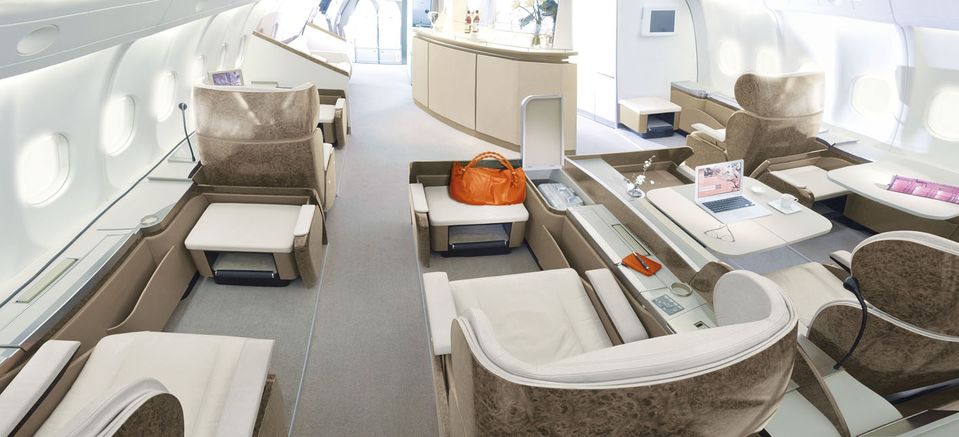
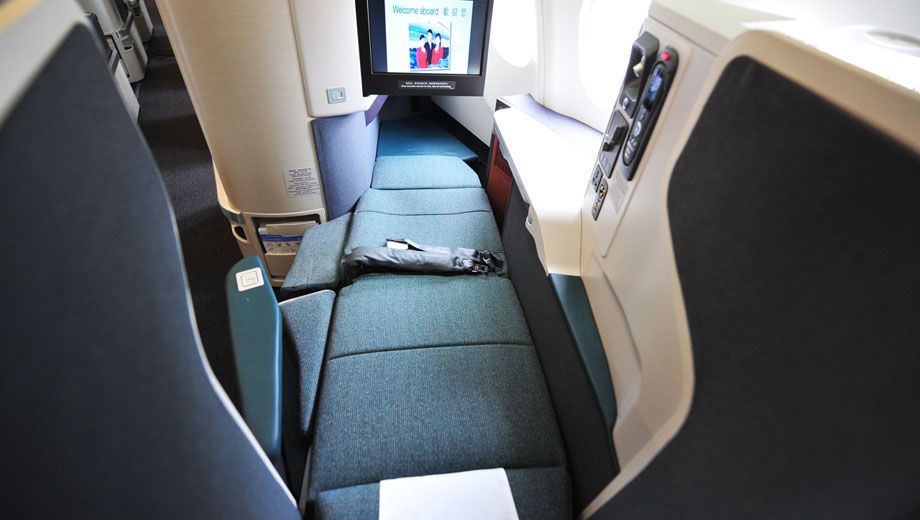
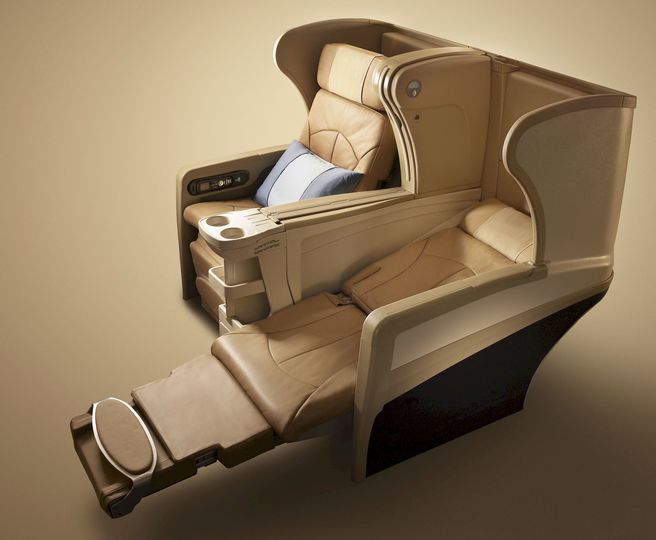
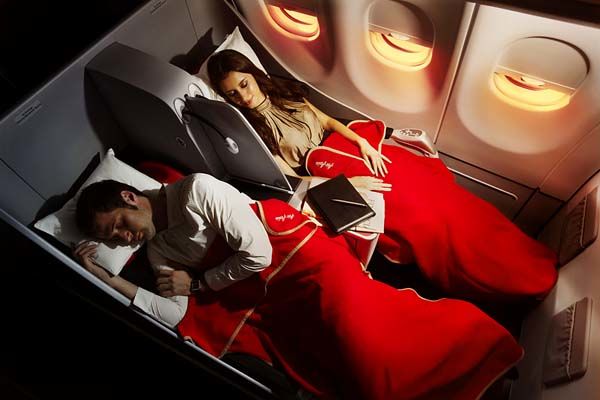
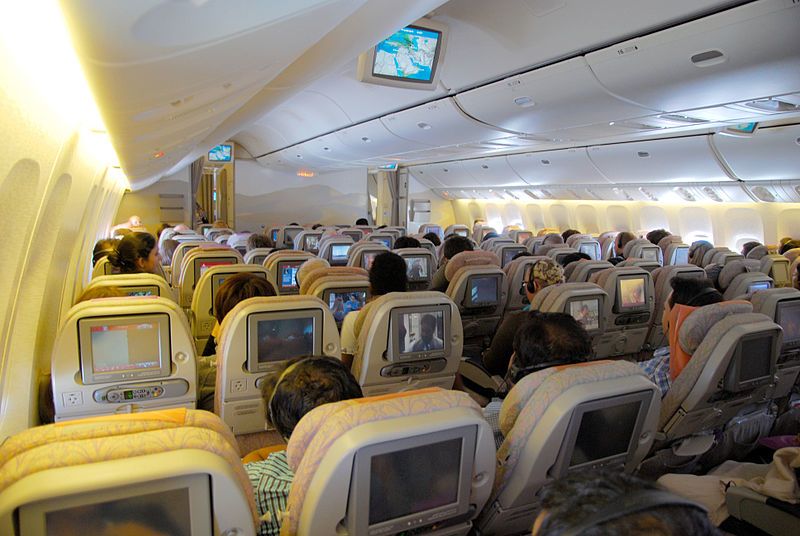
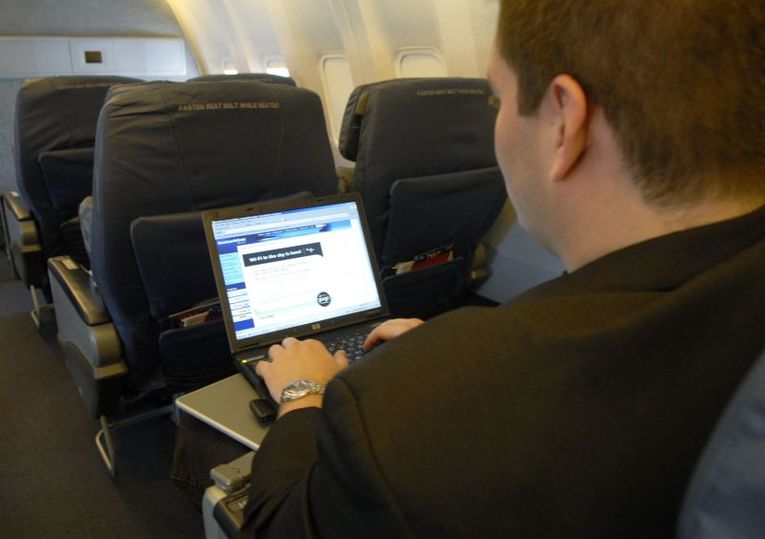
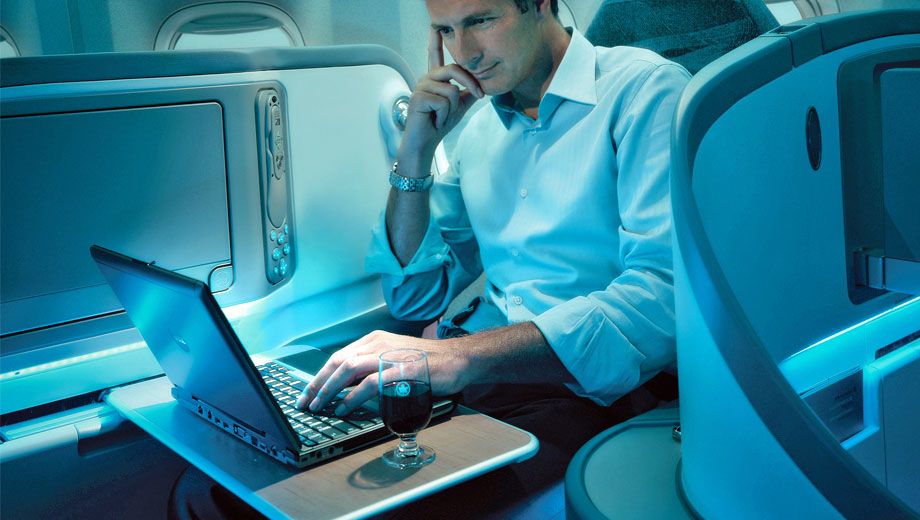
20 Feb 2012
Total posts 125
What airlines business class is the first picture? Seems really cool - better than Cathay's
11 Jan 2012
Total posts 20
So airlines will move from a 3-class configuration of First, Business and Economy to a 3-class configuration of Business, Premium and Economy where the Business seats are like the old First and the Premium seats are like the old Business?
Got to love some good airline spin!
04 Nov 2010
Total posts 670
You're making me dizzy, The Riddler! But yes, it's like that isn't it!
First is becoming pretty high-end and almost pricing itself out of many markets (not to mention private suites like SQ and Emirates!), today's best business class (eg Cathay Pacific) is fantastic and a lot of good Premium Economy is like business used to be before lie-flat beds became all the rage.
Works for me, premium economy is top value for international flights.
03 Jan 2011
Total posts 665
Aha, you see what they did there, and all because "business class" is more acceptable for corporate travel policies!
Qantas - Qantas Frequent Flyer
19 Aug 2011
Total posts 165
The First Class trend is far from new, it's been witnessed now for a decade or so, only three airlines in Europe have first class (BA, LH and LX), only two in the US have long haul first class (UA, AA) and first class has been dropped for some years by the likes of SA and NZ.
The rise of premium economy is the more interesting one, as it is to emerge on CX, MH may yet introduce it in due course and we are now seeing both AA and DL introduce an "economy plus" product to rival UA's. In short, it is like the point made that business is becoming like first, and so will be priced accordingly, and as economy becomes more economy - the gap in the market is clear.
Interestingly, it appears the UK long haul markets always remains well ahead of the others, with both UK carriers going lie flat in business over a decade ago and both introducing premium economy.
04 Nov 2010
Total posts 670
Yes but also there will be a whole new generation of aircraft which will not have first class, Boeing 787 and Airbus A350 will both be three-class for almost all airlines with business, premium economy and economy, so this is a trend that is really ticking upwards now.
03 Jan 2011
Total posts 665
It's fairly new outside the US and Europe -- and of course Air France and Turkish Airlines have First Class too, and the amount of full First Class now being flown through Europe by the likes of Emirates, Qatar, Etihad, Singapore and Cathay is seriously impressive. (I also tend to view any trends piece that over-focusses on US airlines with skepticism: it's a very different market, with some of the worst full service airlines in the world.)
I don't really count the "economy with extra legroom" as a premium economy product -- not even on AA's new 777-300ERs, where they'll be regular economy seats (as opposed to the inch-narrower seats in the far back. I'm all in favour of it when flying economy, but it's not the same product as actual premium economy. (In fairness, it's not priced as premium economy either.)
I'm as surprised as you about the UK being a hub of airline innovation, although I'm not sure about the "always remains" part. BA's Club World seat is getting pretty old now (no direct aisle access), but as a concept it's still attractive for a day flight. Virgin Atlantic's new seat is a decent evolution but it's not groundbreaking.
12 Sep 2011
Total posts 2
Great article - thank you!
Hi Guest, join in the discussion on Five top 2012 airline trends that are reshaping business travel